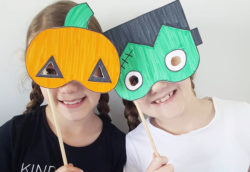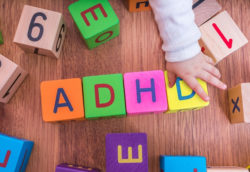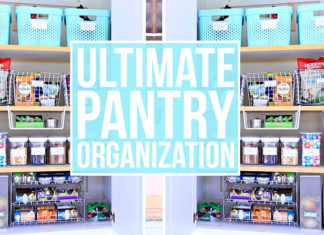Self-control for kids or elders means the same – to be able to resist the immediate temptation and avoid impulsive actions to achieve a bigger goal and learn kindness. Fortunately, there are many ways to teach self-control to the kids. Although this becomes one of the primary tasks of a parent to know “how to teach the children self-control” especially at the right age when they are young or during their early childhood days. Most of the kids have this impulsive nature in them naturally which can be controlled only by self-discipline.
Self-Control act like an Armour to the kid, and they can use this to address many issues in life. self-control is more than just a simple word which can mean willpower, self-discipline, and conscientiousness. But in short, it just means more on ways to regulate yourself. It is said that self-control in kids develop from the age of 3-7 and obviously when you compare it with the elder’s kids obviously lack enough self-control. Poor self-control in kids only leads to aggressive behavior as they grow up. And in few cases, when it goes beyond the power of understanding, it can also lead to anxiety and depression in the kids. Thus self-control also plays a very vital role in kids life even for academic achievements.

Have you tried this with your kid – how much time can your kid resist eating their favorite marshmallow treat? (tell them that if they control it right now, they get to eat double tomorrow or later). Does your child have the self-discipline to control the urge and impulse? What is self-control definition for kids? The meaning of “SELF”-control is the goal or result that is defined by and for “SELF”. In case of this experiment of the kid with the marshmallow treat allows them to control their urge only if they think that the goal is to have more marshmallow treat together when they eat. Thus in a broader picture, the more you understand the aspirations in life and realize the goals, the more successful you are.
The good news is that about 30% of the kids beyond 4 years of age can manage their anxiety, emotions, and impulse to resist the temptation and urge once a while. But there are ways to impart the self-control skills to kids.
Ways of Developing and Teaching Child Self-Control:

1. Build up a Strong Foundation:
What is this foundation that we are talking about here? It is the foundation of TRUST, which means the process in which the child knows that their needs will be catered to when they need. For example, when the kid cries feeling hungry, the parent picks them up and feeds them food immediately. “Trust” here for the kid is to know that food will come when they need. Every time the parent soothes them, they learn gradually and reduce their anxiety to regulate the emotions which eventually lets them soothe self when they feel hungry in future.
Similar to the marshmallow treat experiment we spoke about in the beginning saying the kid trusts the experimenter and can control the urge thinking they get to eat the double the next day, however, if they fail this trust, the anxiety increases and they eat away what they have at the moment.

2. Be a Role Model:
Even if your kid is not around you, they have a constant eye for your actions and learn. If a parent cannot manage their emotions well, do not expect the kid to master their skill! If you react angrily to the kid’s actions, the child gets a message of life which is full of emergencies and forgets to soothe themselves when upset. This makes it even more difficult for the kid to control their emotions or behavior. Regulate your own emotions primarily to help your kid to learn the self-control skills.

3. Give a Break to The Kids:
Imagine having to complete two tasks in a row, and both of it requires self-control. Annoying right? Same happens with the kid when we ask them to do things one after the other; they usually tend to perform the second task worse than the first. The human brain is defined to seek a balance between dull work easy rewards. If you are bound to follow the same routine over a very long period, never taking a break, you are bound to miss the details or changes. By taking out time, you tend to explore ways and new opportunities. Same goes for the kids when they have to do the unpleasant duty every day needing their self-control to act in it; then the kid is likely to suffer.
Learn more on how to deal with anger-management in kids
4. Control Your Anxiety to Control It in Kid’s:
If your little one is playing and climbs up a slide too high, might be scared and wants to come down immediately. How would you respond to this? If you are scared too and ask the kid to come down quickly, you are imparting the fear and anxiety to them by confirming that they just did wrong by climbing high. Rather, as a parent, if you guide the toddler soothingly to come down the ladder calmly, you are in turn teaching them self-control. You are teaching your kid to calm down first of all and re-assuring that there are ways to regulate the anxiety and deal with a situation in a composed way rather than rushing into something. That does make sense when you relate to it right?

5. Helps kids to Develop Attention Skills and Memory:
Kids get distracted very easily due to the impulsive behaviour in them. The lower the concentration the more the suffering. Also the lesser memory retention. To improve all these, the kids can be indulged in some learning activities like word association games or other memory games. This helps them to improve their working memory and get done with a task better with the right decision. They can control their mind better to self-discipline in a better way.
6. Teach kids The Ability to Make Choice:
When there are kids of the same age smartly resisting their urge to eat a treat, why doesn’t your kid do it? Smartness is not a static behavior, it grows and comes with experience. If your kid controls the urge once, they know to do it the next time. When the kid has the ability to choose on their own, they know that they can get what they want more and choose one over the other controlling their anxiety. Because there is something, they want more than the obsession at the moment.

7. Practice To Master It:
Every time the kid gives up something voluntarily, try to know why. When the kid is forced to give away something, it does not account for self-control or self-discipline. Observe that it does not happen unless that is their goal. The kid masters the self-control when the goal changes to enjoy double marshmallow treat later which becomes more important to the kid than their immediate desire of eating just one marshmallow treat. The more you see the kid practicing the skill of self-control the more you appreciate them at every instance.
8. Games to Practice Self-Control:
Isn’t learning fun with play? The easiest way to teach kids and have their attention is via games. Self-control for kids can be taught via these simple activity games:
- The statue game: Kids are allowed to do anything and move until the music is ON, once it goes off, they stand still at their places and freeze like a statue without moving until the music goes ON again.
- The tempo game: This is a fun game too when the kids have to dance to the music, but the twist to the game is: they dance fast when the music is slow and dance slowly when the music is fast.
- The sit and stand game: The teacher when says sit, the kids have to stand and do the opposite when the teacher says stand, they sit.
- The clapping game: The teacher claps once to ask the kids to jump at their place once with two claps and jump twice with one clap. Then reverse it later.
- The even-odd game: The kids are made to sit in a circle or a row, and count numbers. Every even number kid claps instead of uttering the number. For example, the first kid starts by saying out loud “one”, but the next kid has only to clap, the next one says “three” and so on. This game can have a variant for elder kids regarding clap for the table of 7.
9. Be Empathetic To Lead kids into Self-Control:
Kids should be made to play these games at least twice a week and for a good 30 minutes session each. They learn to control anxiety, learn to make correct decisions and improvise on their self-control or discipline skills. The kids show improvement in quicker with such games. Shifting between the rules and working on their memory helps them to bring in a cognitive feature.

10. Can Patience be The Key?
Waiting for something can be a good practice but not for too long. Every time we wait or learn to tolerate to wait by showing patience, it is indeed a form of self-control. To acquire patience, it requires you to melt and deal with the anxiety in you. If your kid isn’t patient enough to wait for you to serve the food in the plate and place it on the dining table, instead resort to shouting, they think they get what they want by doing so. And never learn self-control. And if the parent shouts back at the kid, then remember the #2 we mentioned.
Rather, say “You are hungry, I know, just that the food is ready and you have to give me a bit to serve it on the plate ….. come help me to arrange the table” This reassures the kid that they need to control their urge and concentrate on the ways to achieve their goal. Also teaching the valuable skill of self-distraction. Giving them a positive message is a must to lead to success.
There are a lot of examples of self-control in school for kids. To be in the school and study, the kid needs to control their impulsive nature and pay attention to follow the directions and learn. Kids are asked to do a lot of things that they are not absolutely willing to. However, they know their end results are for good and modulate accordingly, don’t they? Even though a kid might have an urge to play outdoors but he chooses to sit in the class and learn to control his desire to play for his own good. But he knows that they play can happen later in the evening too. Helping your kids to learn to manage themselves is a big chunk of their childhood learning!
Read more on how to teach kids to read










































